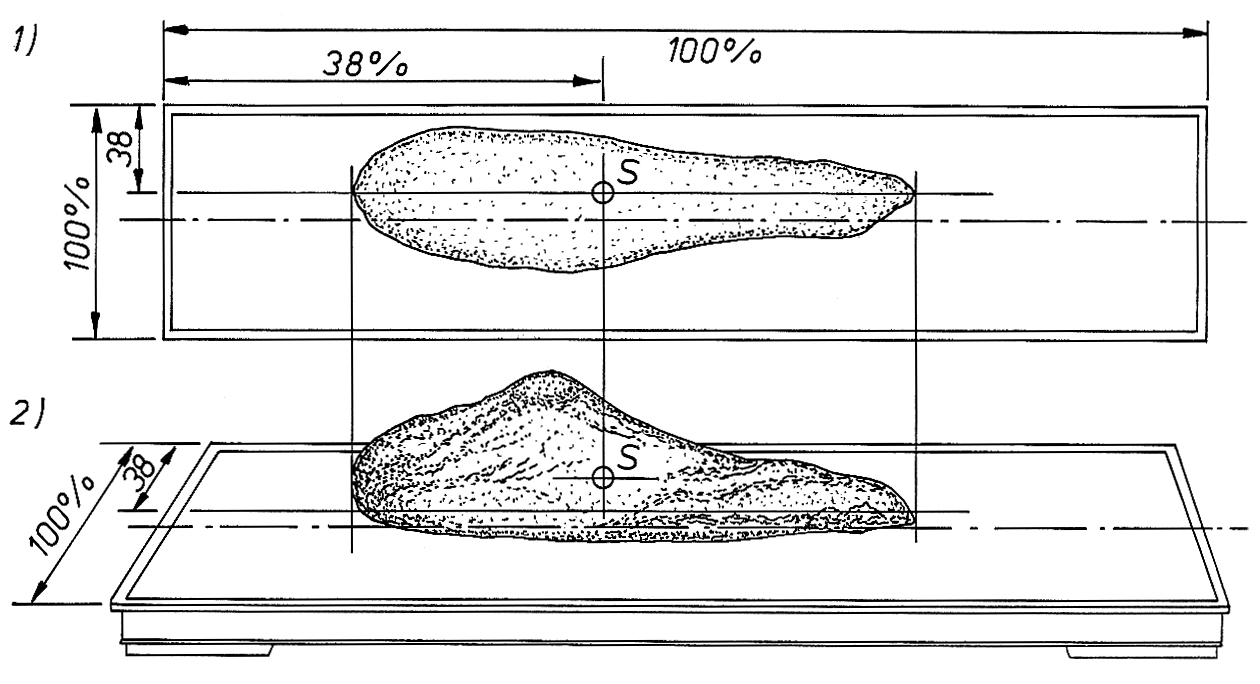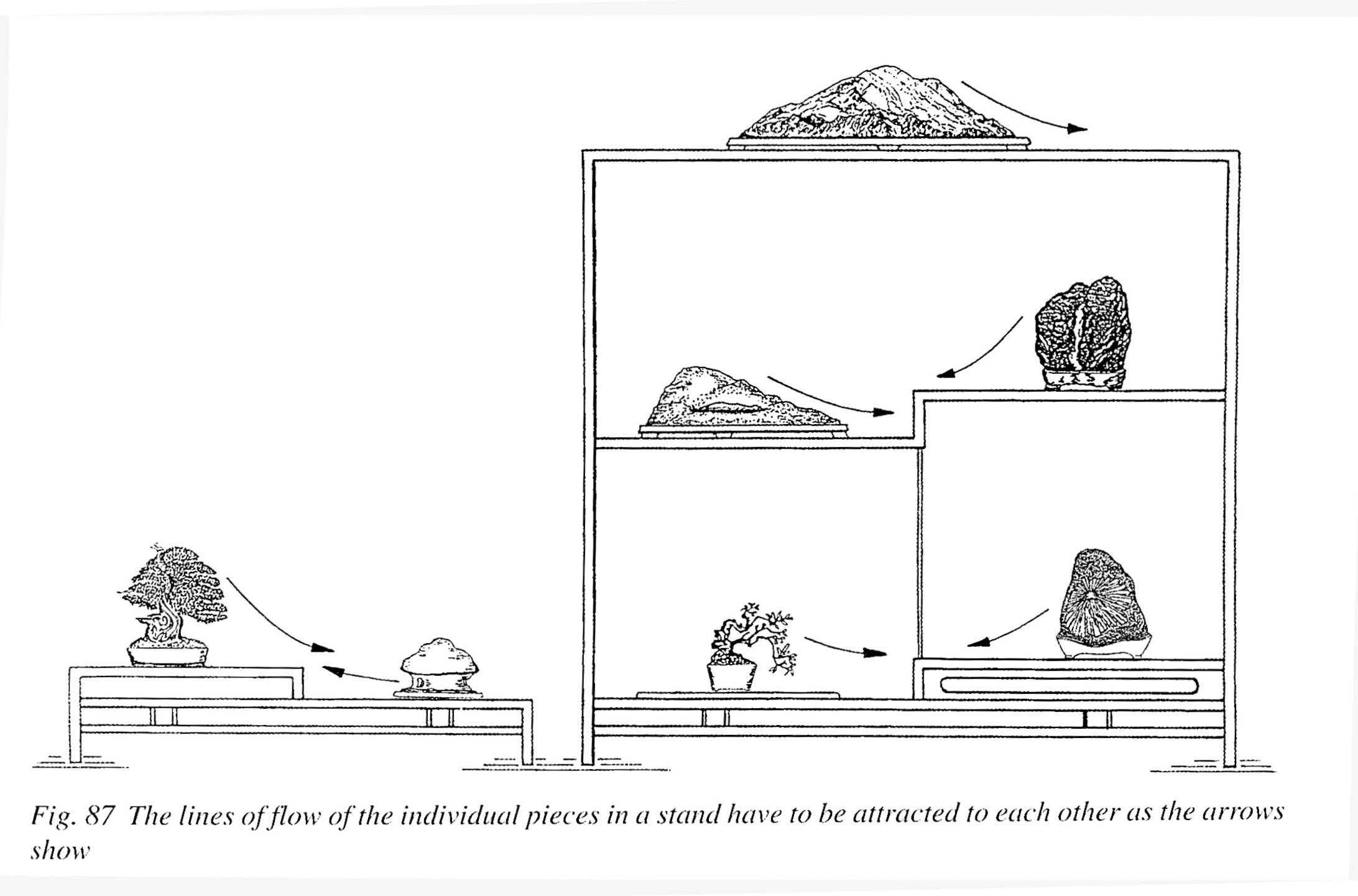Viewing Stones on exhibit
There are differences between a display at home (in a private house), in a tokonoma of a traditional Japanese house, in a museum or in public exhibitions. The intention is always to creating a scene, convey the season, an atmosphere or feeling, a philosophical background. This is created by different “tools”: the kind of chosen accessories, their shape, size (proportions) and colour. As a rule: not more than two or three objects should be display in an arrangement. “Less is more”! When you bring nature (a stone) in your house and display it in your tokonoma you have to create space. This way you are able to create space for your imagination, to create a microcosm.
Repetition should be avoided. When using for example a rectangular suiban don’t add a plant in a rectangular pot (use instead an oval, round or handmade irregular pot). A calligraphy should emphasize the meaning of the display. It should evoke a philosophical background or indicate the season. Don’t display calligraphies where the character of stone features. Slim, small sized scrolls (fig. 31) are well suited for exhibitions, but should be used sparingly. Large and long scrolls are suited for a tokonoma display. The scroll should not reach the floor (tatami mat).
The following aspects are important:
1. theme of the display respectively the intention of the exhibitor:
- greeting a guest
- indication of the season
- indication of where the object was found
- connection with a mythological, philosophical, historical or artistic background
2. correct placementof the objects
3. direction of flow/movementof the objects
4. balance and harmonybetween the exhibited object (accent plant, table, stand, shelf, wooden board, mat, art object, scroll…) regarding shape, size, proportions, colour.
Placement of a viewing stone in a suiban or doban follows the rules of the Golden Section. The direction of flow goes to the larger space.

Drawing by Willi Benz in “Bonsai Kusamono Suiseki – A Practical Guide for Organizing Displays with Plants and Stones”: 1) view from above, 2) front view
Items in exhibit should correspondent with each other:

The lines of flow of the individual pieces in a stand have to be attracted to each other as the arrows show. Drawing by Willi Benz in “Bonsai Kusamono Suiseki – A Practical Guide for Organizing Displays with Plants and Stones”, available from Gudrun Benz
